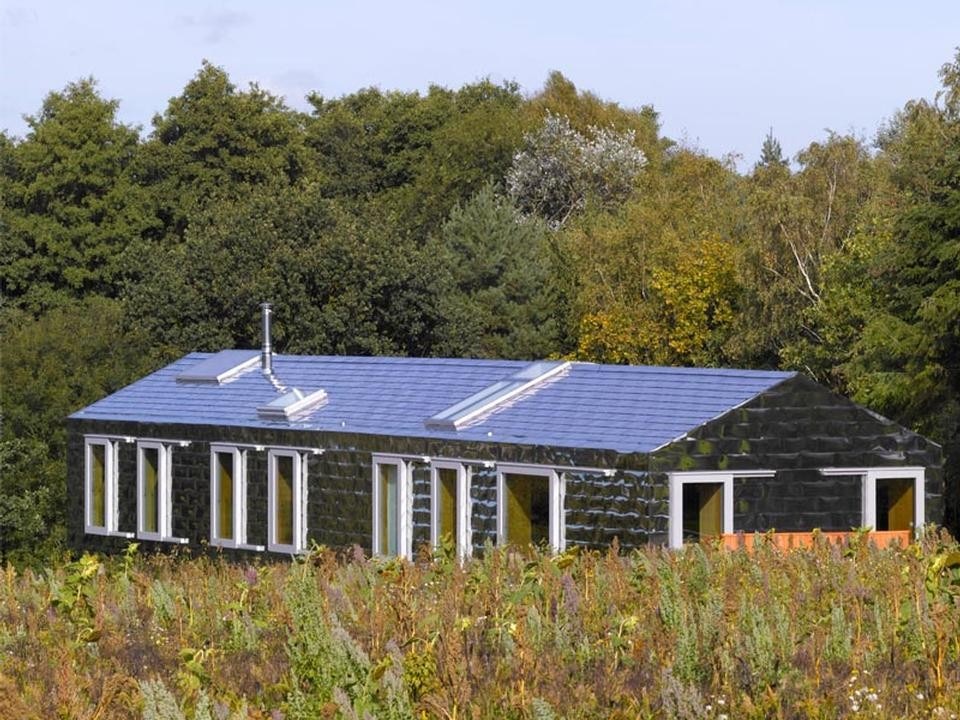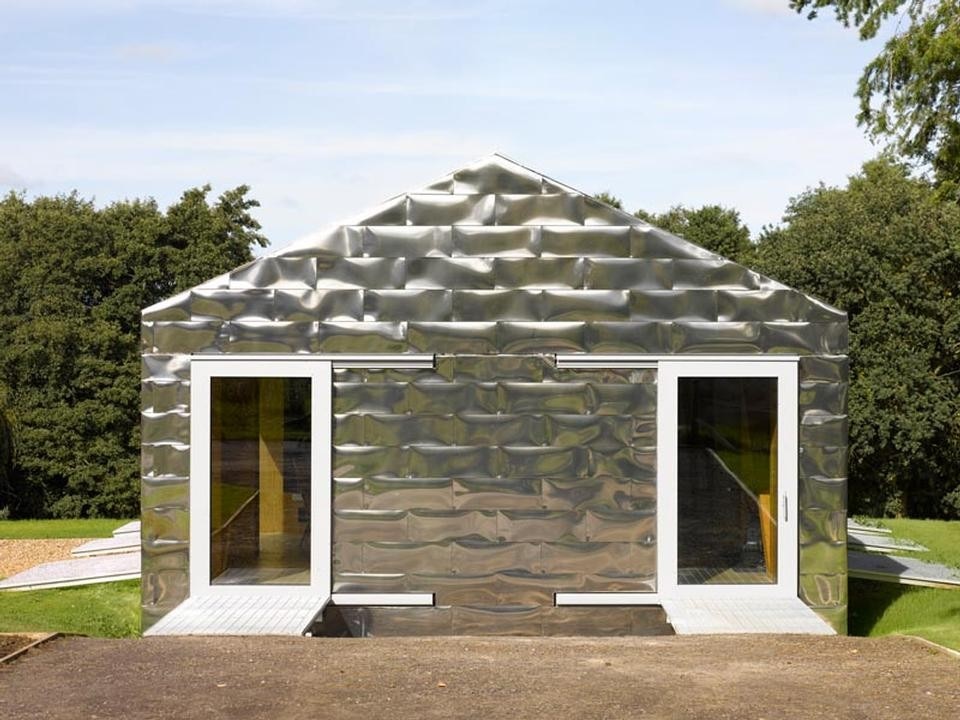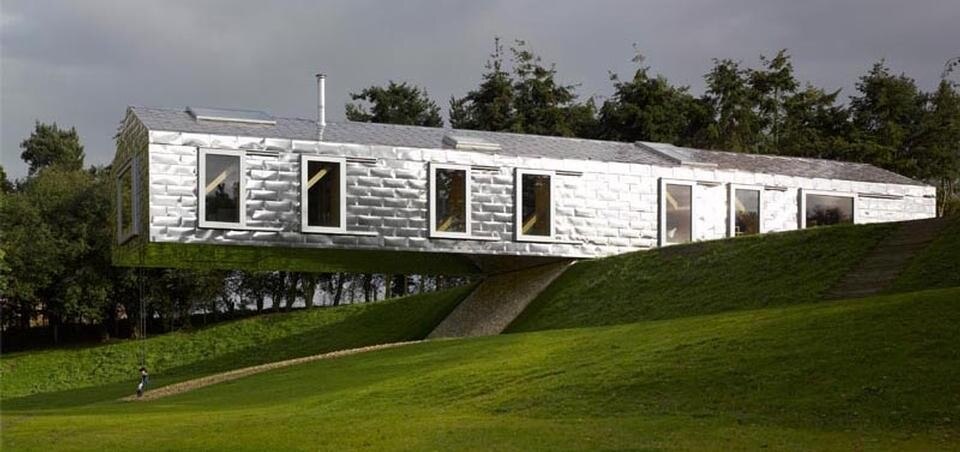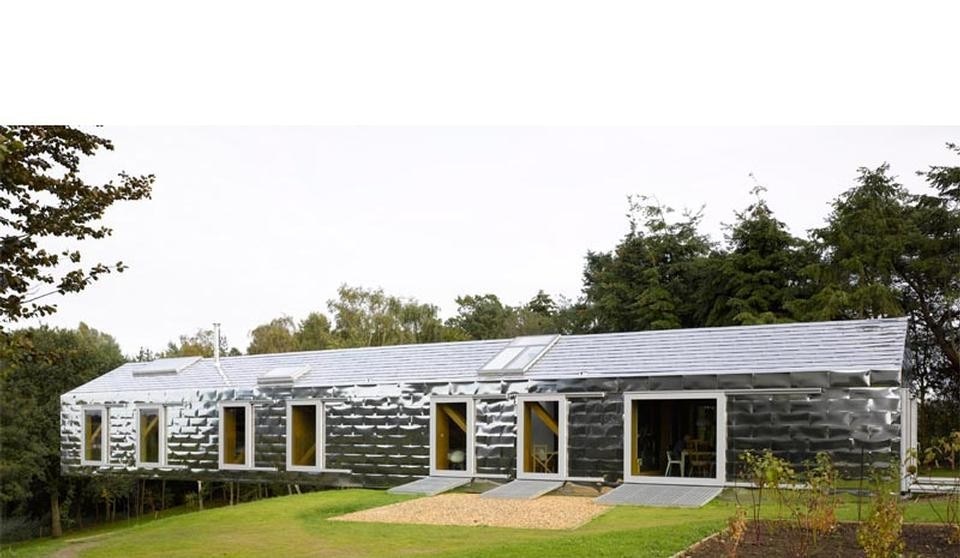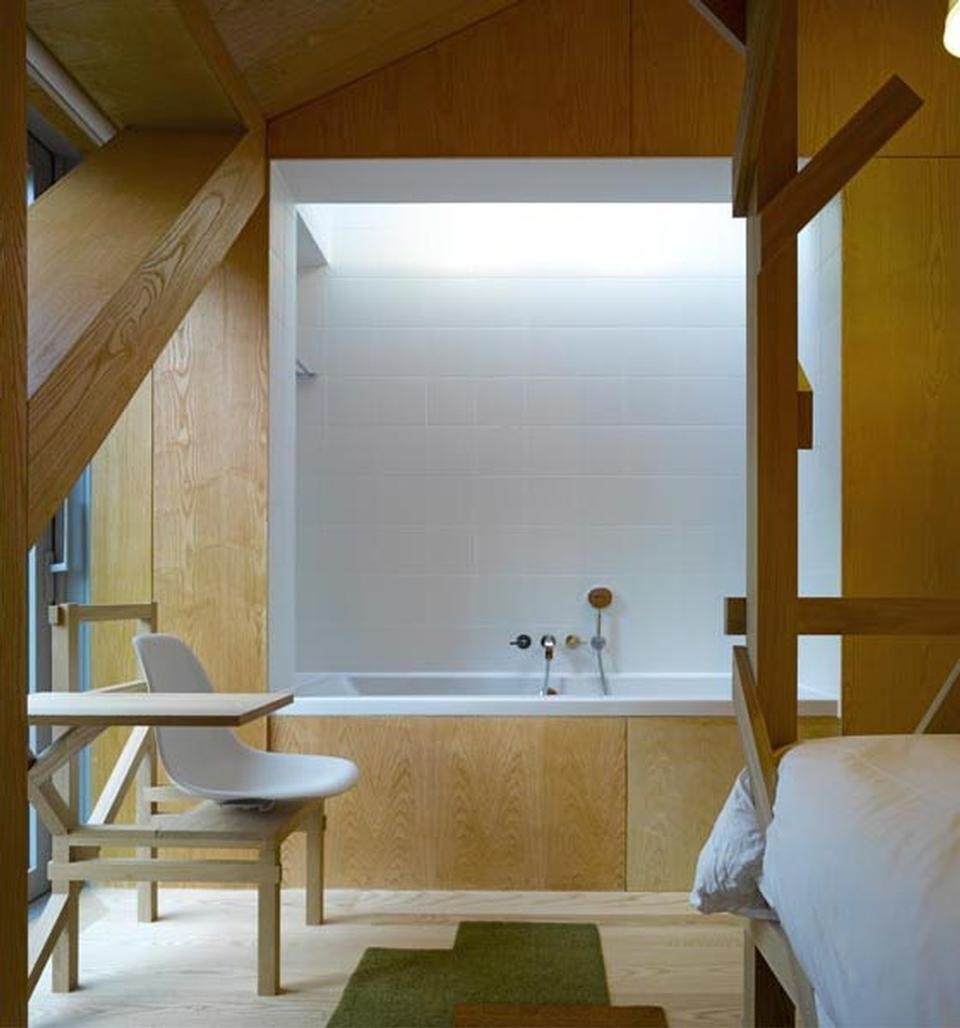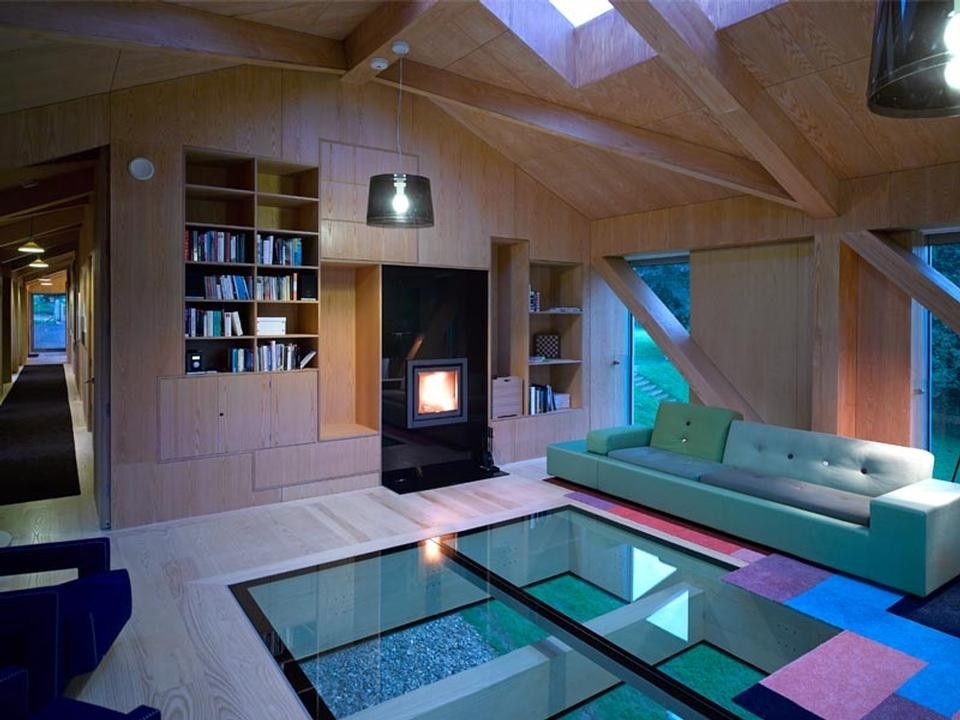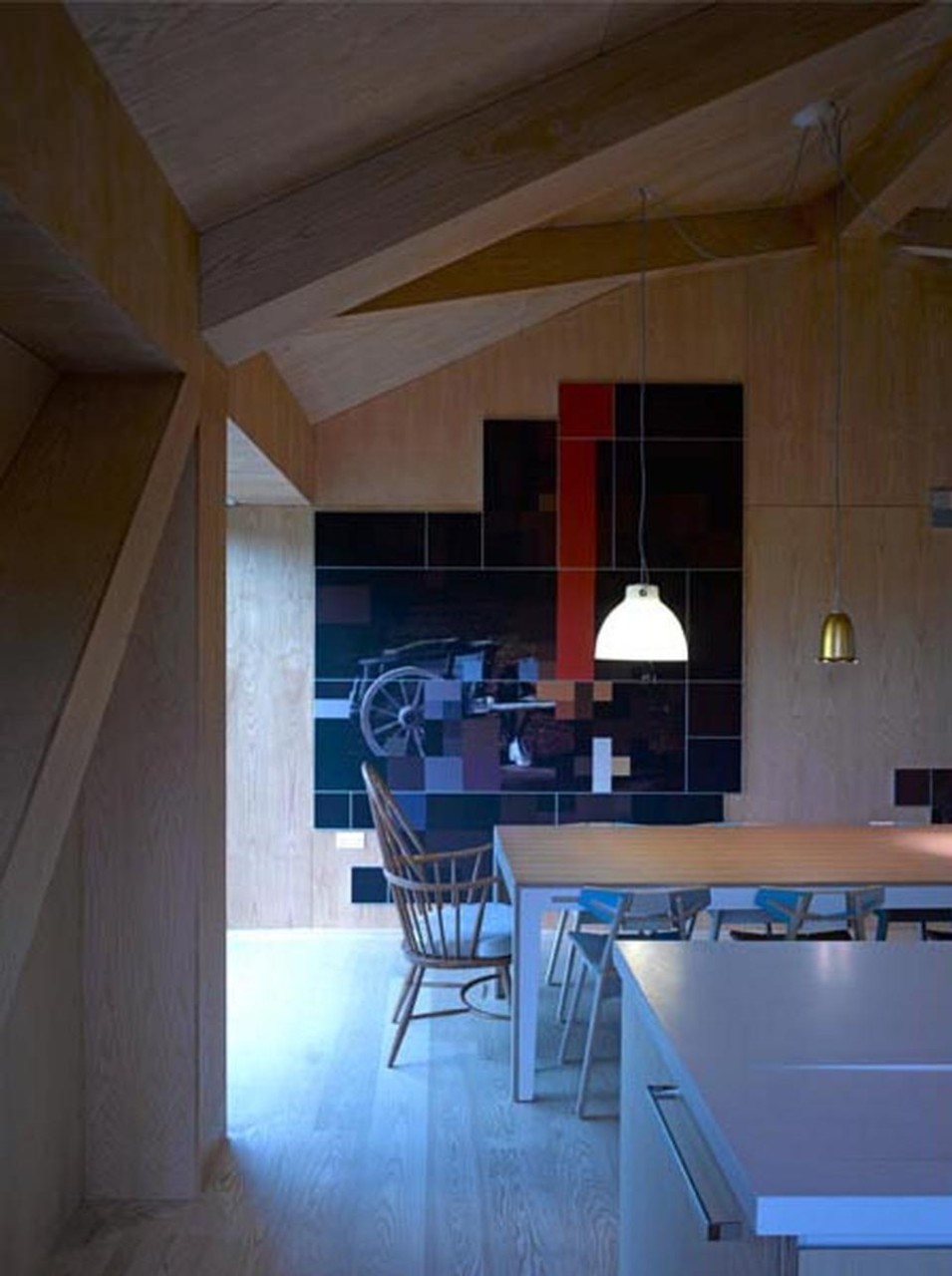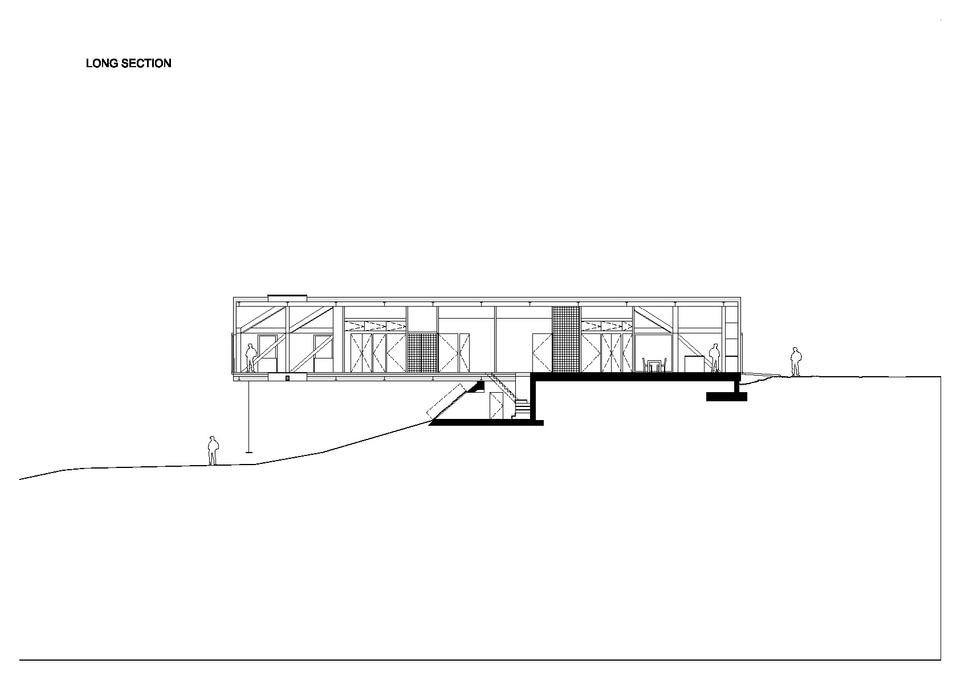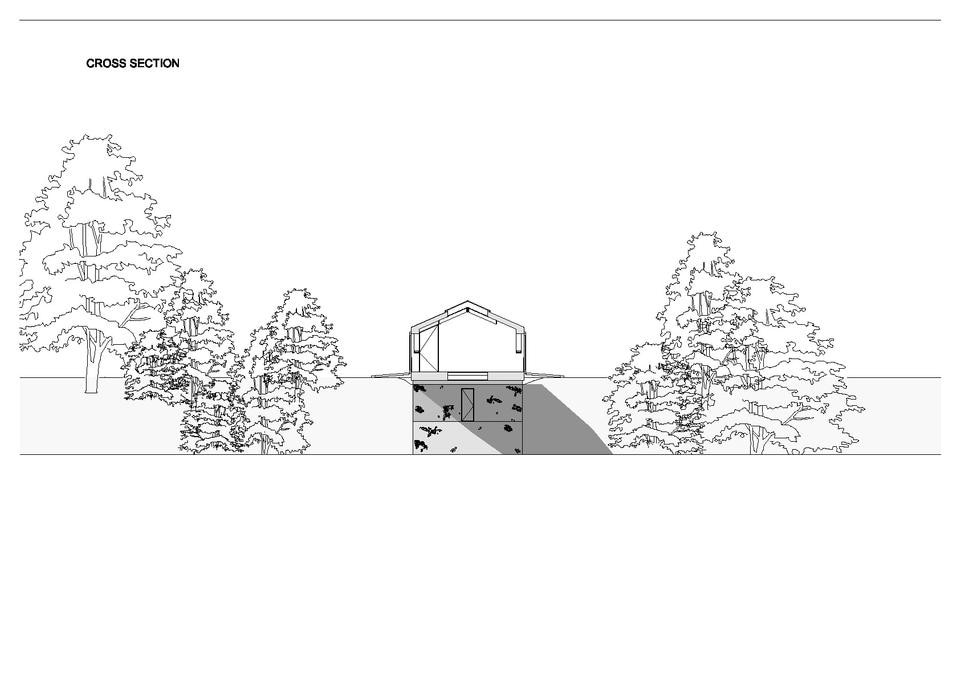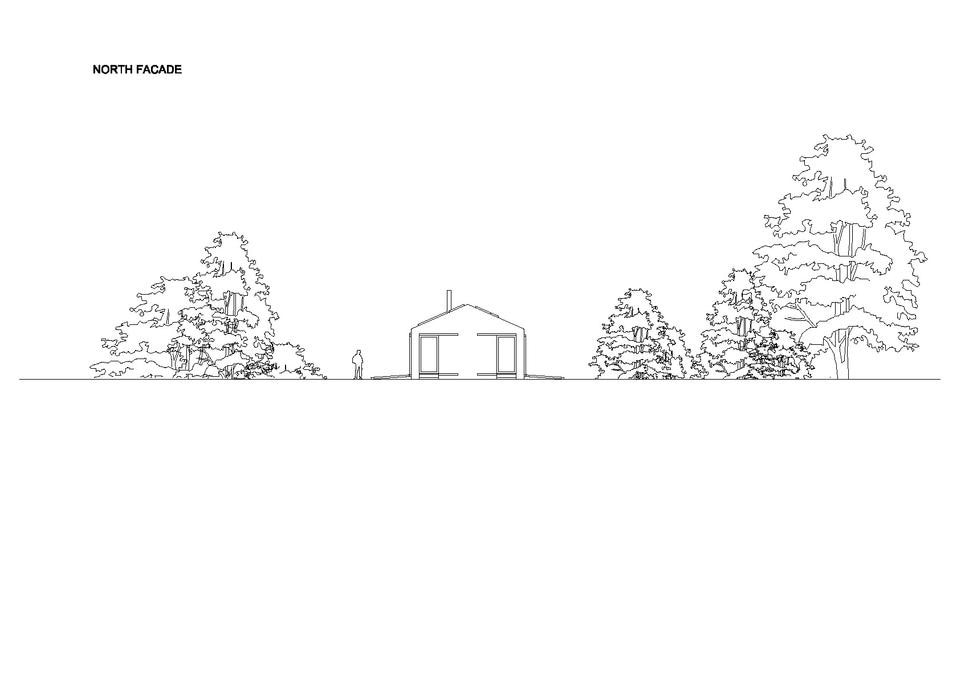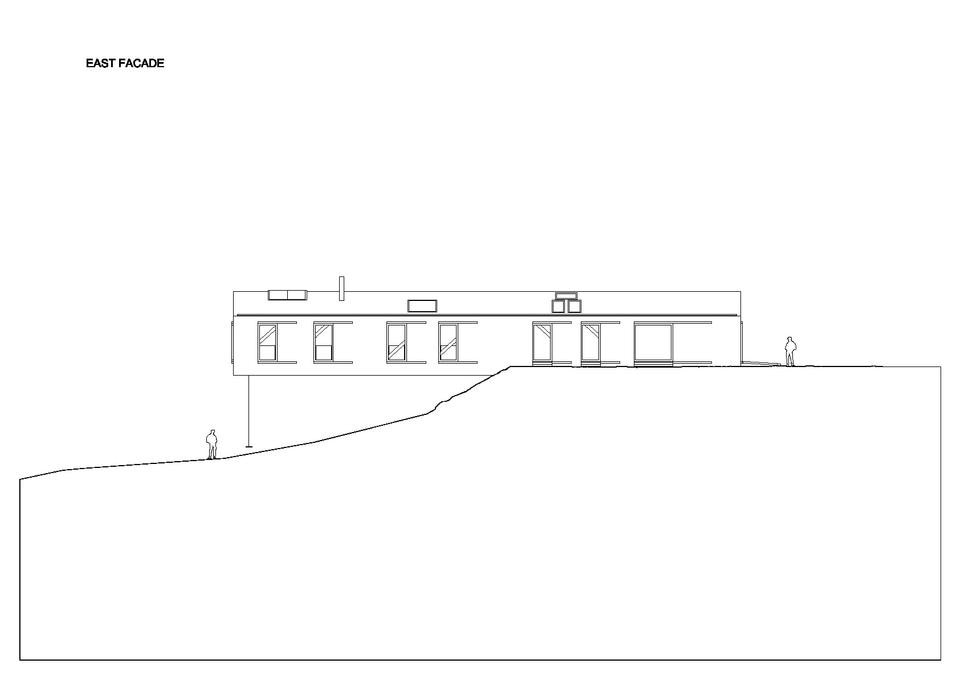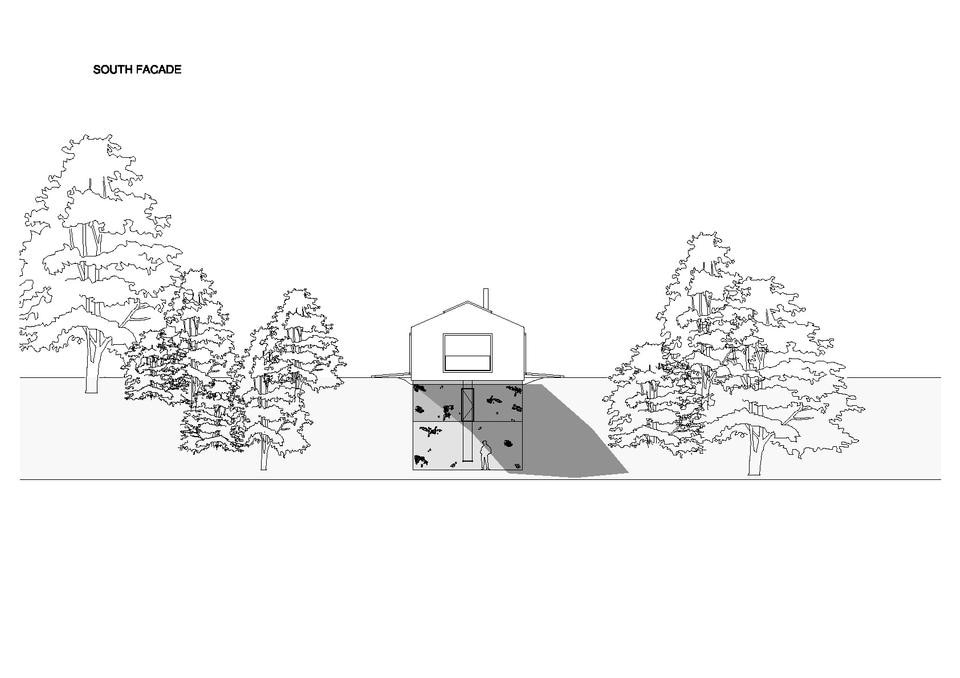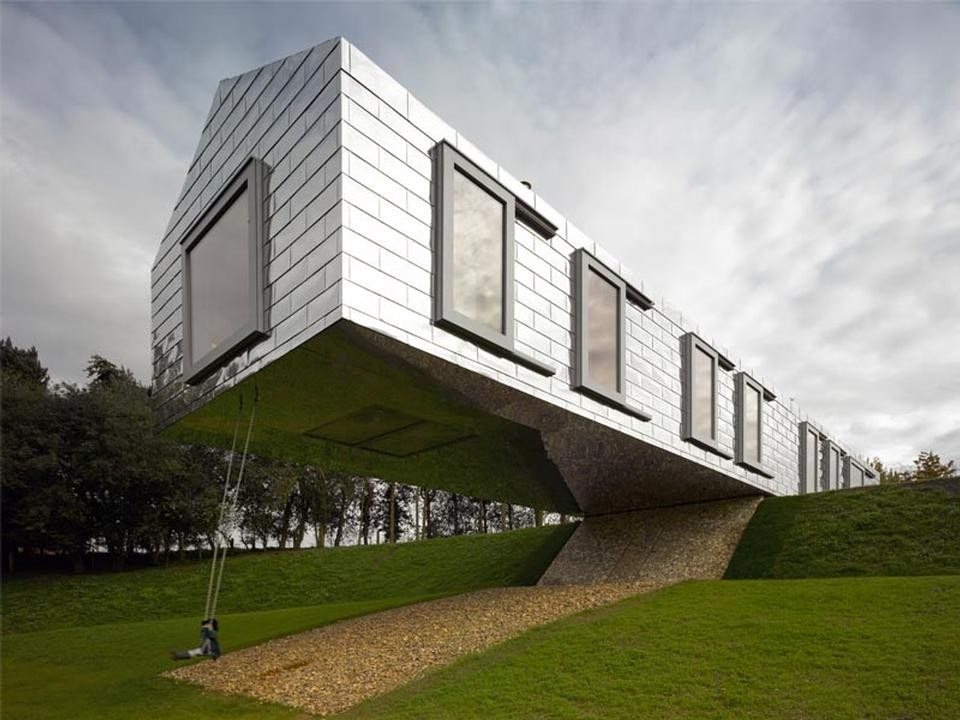MVRDV began their search for a site in Suffolk looking for beaches, and churches, trying to find a tumbledown milk barn to renovate. They came across a remote patch of land on two levels with a frog-filled lake and scattered with dilapidated barns. Instead of trying to transform an existing structure, they decided to acknowledge the local pitched-roof vernacular, even the footprint of a normal-sized barn, and simply extrude it horizontally until it couldn't be moved much more. The house, therefore is incredibly simple in plan, but betrays its complex structure internally. Vast ash-clad trusses zig zag along all visible walls. A corridor begins with a kitchen and is flanked by a series of four en-suite bedrooms until it reaches the generous and cosy glass-walled living space that hovers over the grass and veers towards the lake.
The cladding is best described as mirrored shingles. Highly polished layers of stainless steel that distort and reflect the grassy surroundings. "It becomes like a fairy tail," says Mass. "It's not that literal anymore." A very nice touch is the children's swing that dangles from the centre of the cantilever. The furniture in all the rooms is beautifully designed by Dutch-based Studio Makkink & Bey, although the omnipresent pixellated graphic montages that are intended to link the space together are slightly dubious. "Sometimes you go to a holiday home and there's no signs of the owner at all," explains Maas. "We wanted to leave some traces. So there are books, furniture, paintings." He has a point but the books seem to be pretty self-promotional rather than just interesting literature for the visitors. MVRDV back-catalogues probably wouldn't make it onto my holiday reading list, but there are recipe books and Alain du Botton philosophy to make up the time.
Although they are more rightly associated with their radical mass housing or even city designs, this small and perfectly formed study is a lighthearted and playful, as Maas well knows. "Is there irony in this building? Yes of course. But in Dutch and also in English I think if you reach humour you have bypassed all the difficult things. Beatrice Galilee
